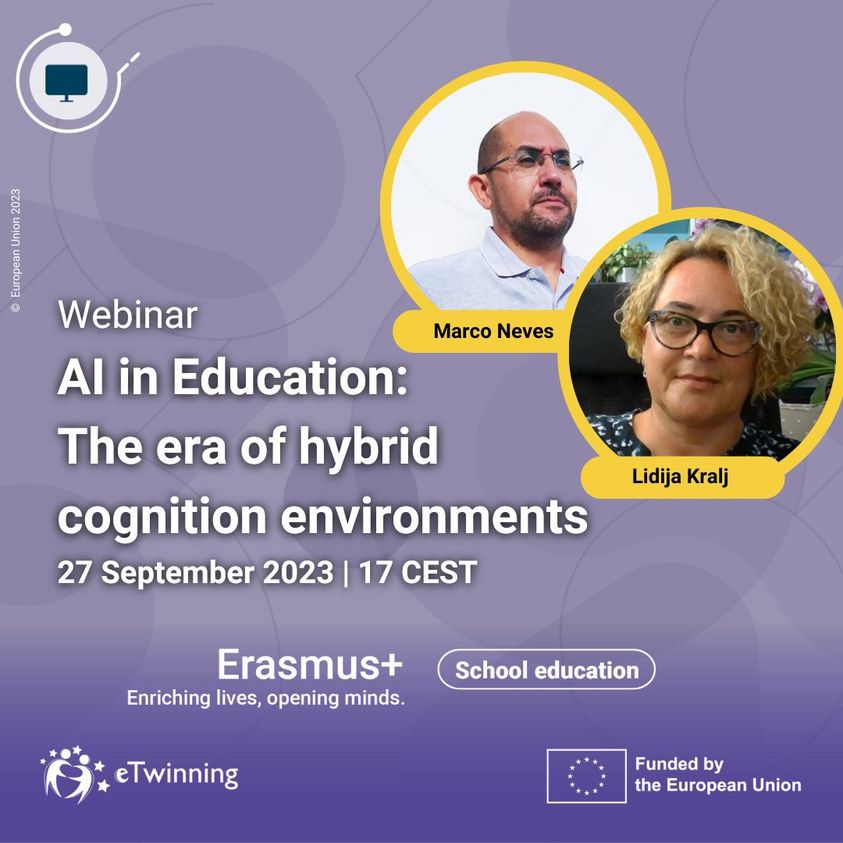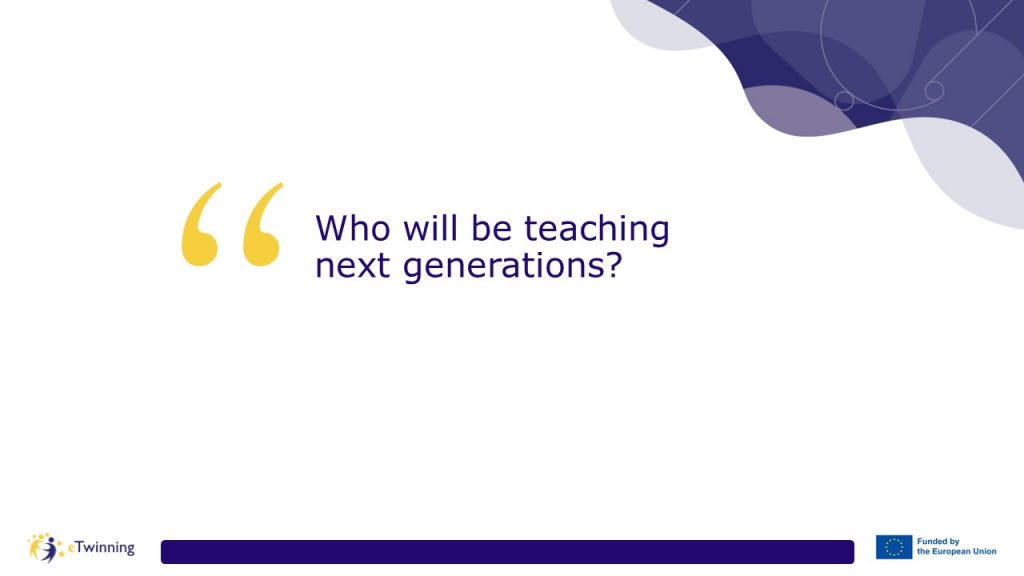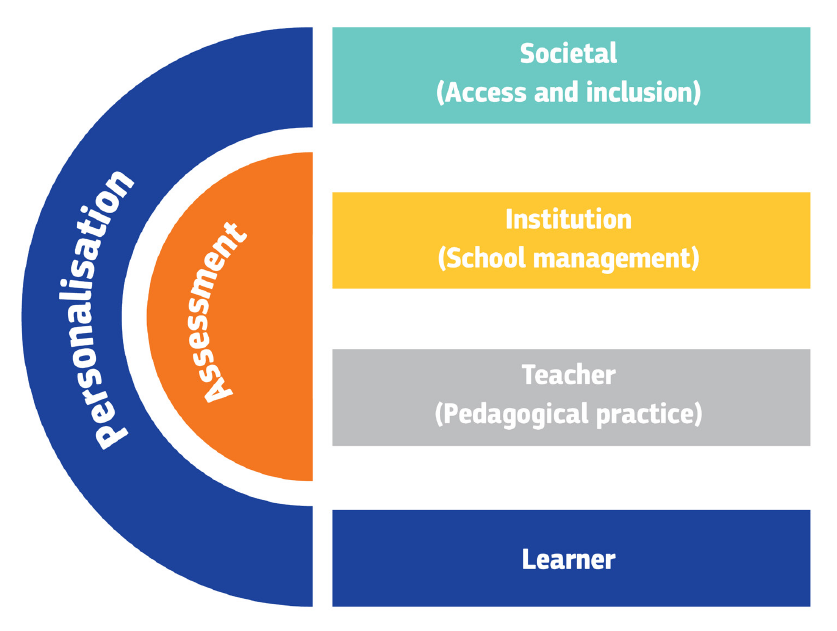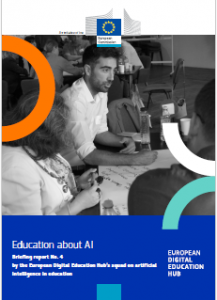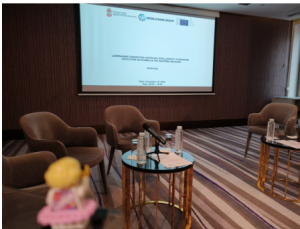 Pred sam kraj godine pristigao je neočekivani poziv na radionicu „Leveraging generative artificial intelligence to enhance education outcomes in the Western Balkans“ Svjetske banke, Ministarstva prosvjete Republike Srbije i Europske komisije. I tako sam se našla u vrlo ugodnom društvu nekih stari poznanica i novih kolega s kojima sam podijelila svoja mišljenja o etičkoj upotrebi umjetne inteligencije u obrazovanju te s njima razmatrala moguće scenarije za primjenu u osnovnim i srednjim školama u Srbiji.
Pred sam kraj godine pristigao je neočekivani poziv na radionicu „Leveraging generative artificial intelligence to enhance education outcomes in the Western Balkans“ Svjetske banke, Ministarstva prosvjete Republike Srbije i Europske komisije. I tako sam se našla u vrlo ugodnom društvu nekih stari poznanica i novih kolega s kojima sam podijelila svoja mišljenja o etičkoj upotrebi umjetne inteligencije u obrazovanju te s njima razmatrala moguće scenarije za primjenu u osnovnim i srednjim školama u Srbiji.
Zanimljivost: Klizalište u dvorištu hotela, prefina hrana i susret s kolegicama koje nisam vidjela desetak godina.
Održan je i prvi sastanak uživo novog Erasmus+ projekta udruge Suradnici u učenju, „EducationalAI – Empowering Educational Leaders with AI Strategies“ u kojem ćemo, tijekom sljedeće dvije godine partneri izraditi vodič za korištenje umjetne inteligencije i smjernice za legalno i etičko korištenje umjetne inteligencije, osmisliti i postaviti e-tečaj, provesti webinare za za učitelje, nastavnike i ravnatelje.
Zanimljivost: Partnere projekta upoznala sam 2023. tijekom suradnje u EDEH Squadu AI u obrazovanju. Dobre priče uvijek imaju nastavak.
Početkom prosinca dovršili smo radnu verziju dokumenta „European Reference Framework to Assess Educational Technologies“ za Vijeće Europe, koji istražuje potencijalne modele za referentni okvir, istražujući postojeće standarde, mehanizme upravljanja i mjere podrške kako bi se osmislili održivi, prilagodljivi i uključivi sustavi primjene umjetne inteligencije u različitim obrazovnim kontekstima.
Zanimljivost: Iako se ne nastavlja rad na tom dokumenta, puno sam naučila o različitim aspektima evaluacije, kao i o suradnji u timu. A neki dragi ljudi iz tog tima su se uključili i u EDEH Squad Explainable AI – suradnja je uvijek važna.
 Suradnju s Nacionalnim agencijama za Erasmus program nastavila sam predavanjem „Understanding AI and identifying its implications and limitations”za djelatnike svih Nacionalnih agencija organiziranim od strane European SALTO Digital Resource Centre iz Finske. Pričala sam o EU regulativi i etičkoj primjeni umjetne inteligencije, uz nekoliko interaktivnih aktivnosti za više od 500 sudionika.
Suradnju s Nacionalnim agencijama za Erasmus program nastavila sam predavanjem „Understanding AI and identifying its implications and limitations”za djelatnike svih Nacionalnih agencija organiziranim od strane European SALTO Digital Resource Centre iz Finske. Pričala sam o EU regulativi i etičkoj primjeni umjetne inteligencije, uz nekoliko interaktivnih aktivnosti za više od 500 sudionika.
Zanimljivost: Kolege iz SALTO-a upoznala sam prije par godina, a onda povremeno sretala na konferencijama i eto pojavila se prilika za suradnju. Posebno mi se svidjelo što su imali priliku čuti i vidjeti moje predavanje uživo u Rigi i nakon toga rekli da žele baš takav pristup.
Kao poseban stručnjak sudjelovala sam na validacijskoj radionici projekta DLIFE (Digital Legislation Implications for Education) Joint Research Centra i DG EAC.
Zanimljivost: Zanimljivo je pratiti kako se stavovi i mišljenja sudionika mijenjaju te pratiti osobni razvoj kao posljedicu razmjene ideja i mišljenja sa stručnjacima različitih profila iz različitih zemalja.
EDEH Squad Explainable AI je zakoračio u završni mjesec te je trebalo dovršiti pisanje dokumenata. Moj doprinos bio je analizirati potrebe, mogućnosti i zahtjeve za transparentnošću i objašnjivošću sustava umjetne inteligencije iz perspektive učitelja i učenika. Treba znati koja pitanja postaviti i od koga tražiti odgovore, kao i kako iskoristiti EU regulativu za zaštitu privatnosti i dobrobiti.
Zanimljivost: Dragi ljudi s kojima sam nastavila suradnju iz prvog AI Squada, oni s kojima možeš svašta prokomentirati i za koje znaš da će pružiti podršku kad zatreba (i kojima ja pružam podršku).
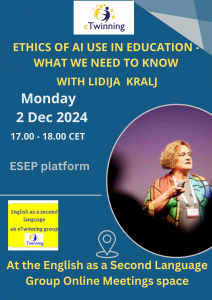 Prosinac sam započela webinarom o etičkim smjernicama za primjenu umjetne inteligencije u obrazovanju za eTwinning grupu English as second language.
Prosinac sam započela webinarom o etičkim smjernicama za primjenu umjetne inteligencije u obrazovanju za eTwinning grupu English as second language.
Zanimljivost: eTwinning je i dalje „moja obitelj“ iako nisam eTwinning ambasadorica već 7 godina. Jednom eTwinnerica, uvijek eTwinnerica.




